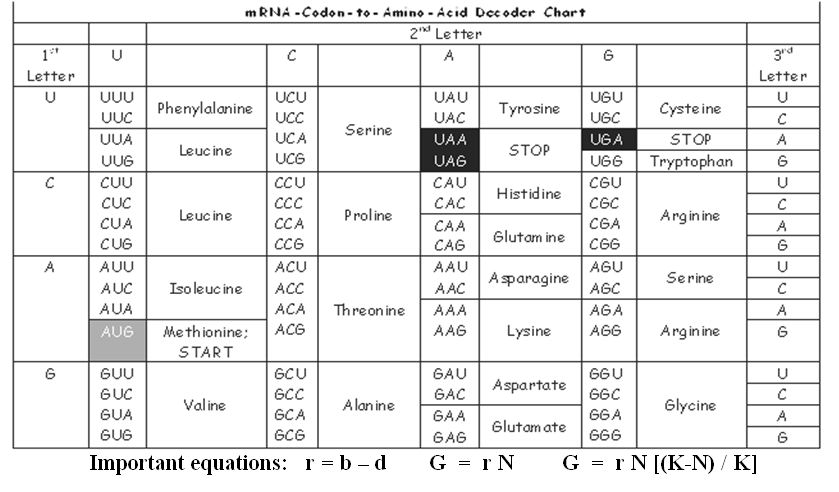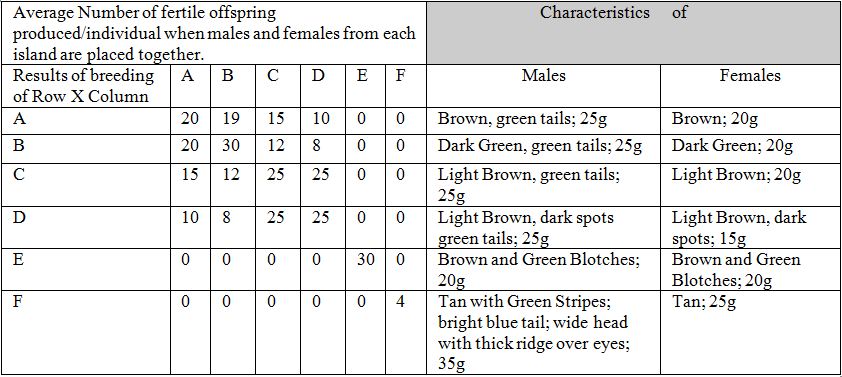 |
 source |
Autoimmune diseases are particularly traumatic because the body's immune system mistakenly attacks its own tissues. Myasthenia gravis (MG) is an autoimmune disease in which people produce antibodies that attack their own acetylcholine receptors within the neuromuscular junction synapses, gradually reducing the number of functional receptors. Symptoms include extreme muscle weakness within the eyelids, face and throat. It is not contagious but if it progresses, MG can be fatal. |
 source |
|
Pat owns a small horse ranch and provides clover to the horses as a treat. When the horses are grazing on the clover, they form a very short food chain and also provide fertilizer in the form of their own manure. |
 source |
|
|
 source |
Dr. C. Alvin Ben-Sun has developed a new technique for measuring the sugar content of single cells using microelectrodes. He tested his new instrument by placing Anacharis (an aquatic plant) in test tubes containing water and calcium carbonate to provide an abundant supply of carbon dioxide (CO2). Affixed to the tube is a LED light source that can be controlled to produce a full spectrum of light or light of particular wavelengths all at variable intensity (brightness). |
|
|
Menkes disease is an X-linked recessive disorder that affects the ability of cells to transport copper into cells, leading to copper deficiency, and loss of proper nerve function often leading to paralysis in certain organs. |
 source |
| Individual | Menkes | Blood type | Dimples (D is dominant) |
| Mickey (male) | No | AB | No |
| Minnie (female) | Yes | O | Yes |
|
Doctors have found mutations that change the 18th, 19th, and 20th amino acids of the protein that transports copper are responsible for Menkes disease. People without Menkes disease have the following DNA sequence at these positions: AGT TCG CGT.
|
|
|
 source |
Unfortunately, scientific discoveries can sometimes be used in tragic ways. For example, the U.S. Senate post office now tests for ricin, a poison found in castor beans, to block attempts to inflict harm on government officials. Ricin inactivates ribosomes. Story |
|
|
 source |
The Chinese soft-shelled turtle, Pelodiscus sinensis, is found in swampy, brackish water and is native to East Asia. These turtles have highly specialized mouths. Their unusual mouths were first discussed over a century ago when researchers suggested that the velvety tissues inside function in a similar way to gills in fish. Observations indicate that these turtles commonly submerge their heads into pools of water for up to 100 minutes and rhythmically move water over their throats. Recently, scientists brought turtles into the laboratory to examine what compounds, if any, these turtles were excreting through their mouths. The scientists provided the turtles with water and observed as they regularly dipped their heads and rinsed water through their mouths. After chemical analysis of the rinsed water from the turtles' mouths the scientists discovered that the turtles were excreting urea (a nitrogen waste component of urine in reptiles) through their mouths instead of their kidneys. In all other turtle species urea is excreted out of the cloaca - the single orifice used for waste matter and reproduction. |
 source |
 source |
Dr. Foxerone, a famous OSU herpetologist (a reptile scientist) is not surprised by this finding. He knows that other soft-shell turtle species in North America are able to remain underwater for up to 5 hours at a time by engaging in respiration through gas exchange across the linings of their throats and cloaca. Based on this information, he suspects that the behavior of dipping their head and rinsing water through their mouth in other species of soft shell turtles may also reflect that they excrete urea through their mouths instead of their kidneys. |
|
To test Dr. Fozerone's idea that other soft shell turtles can excrete urea through their mouths, he places 20 individual North American soft shell turtles in 20 individual tanks. After observing each turtle submerge its head in the water and rhythmically moving water over its throat, he analyses the water from each tank for urea. As he suspected, when he examines the data each sample is positive for urea.
Dr. Foxerone is investigating the effect of temperature on urea excretion by these turtles. At 10:00 AM he places individual turtles of the same sex, age and size in four different tanks maintained at four different temperatures (5oC, 10oC, 15oC, and 20oC). Twelve hours later he collects water from each tank and examines the water for the presence of urea. |
 source |
|
 source |
A founder population of freshwater soft-shell turtles is established in a pond. The population grows rapidly in size until its members experience food shortages and frequent exposure to predators.
After 20 generations, a larger proportion of soft-shell turtles survive to reproductive age due to a mutation causing a harmless skin protein to increase the hardness of their shell. Soft-shelled turtles require energy to move their muscles and escape the large predatory catfish that consume them. |
|
To study the respiration rate of these soft-shell turtles the scientist constructs an air- and water-tight environmental chamber with constant temperature, and lights that turn on at 10 AM, and turn off at 10 PM. The scientist seeds the tank with algae and micro-crustaceans as a source of food and oxygen for his soft-shell turtles. He begins monitoring the oxygen level in the environmental chamber over a 24-hour period.
Two soft-shell turtles, a large adult female and her, similarly-shaped, juvenile offspring, which was approximately 1/10th of her length were sitting on a hot rock (30°C). |
 source |
|
 source |
Scientists continue to monitor the turtle population in this pond for another 40 generations. In 2011, the soft shell turtle population was thriving and over its carrying capacity. Sadly, by then this was one of only three remaining populations of this species of turtle in the world and was listed on the endangered species list. The scientists were particularly concerned about this turtle species because they discovered that the pathogenic Entamoeba invadens, a deadly parasite of turtles, colonized the turtle population in the pond for the first time during 2011. |
|
Before the scientists could vaccinate the turtles, E. invadens infected all the turtles in the pond and 80% of the turtles died. However a large adult female and her small juvenile offspring survive the infection with E. invadens. The parasite subsequently disappears from the pond. Two years later, E. invadens reappeared in the pond. However, the large female and her offspring (now much larger) were not affected by this disease.
Fifty generations after the initial devastating outbreak of Entamoeba invadens, most turtles are resistant to E. invadens even though they have never encountered E. invadens during their life time. |
 source |
|
|
On each of the Surimi Islands in the southwest Pacific, is a population of lizards, each of which looks quite different from the others. They also vary in diets and habitats. None of the island populations can breed with their ancestors. |
 source |
|

To examine the mating habits of these lizards, scientists provide them the opportunity to breed both with those on the same island and those on other islands then count the average number of fertile offspring produced. The scientists notice that male and female lizards from each island have specific characteristics.

|
 source |
Scientists note that some of the lizards on Longo have spots as do most of those on Keto. There is evidence that those on Keto are descendants of the older, much larger population on Longo, perhaps resulting from a small population that arrived shortly after Keto Island was formed. Data support the conclusion that there has been no migration (gene flow) between the islands for thousands of years.
Males on Fuma Island advertise or display to females, much the way Prairie Chickens do. The thick ridges over their eyes protect them from the bites of other males during competition. Those with thicker ridges win more fights and call louder to females.
There are many males on Fuma that are tan with green stripes and have bright blue tails and wide heads but lack very thick ridges over their eyes. They are unable to defend a small territory from which they call to attract females so they wander around the island. Genetic testing indicates that about 5% of young lizards are the offspring of these wandering males.
|
|
|
Albert is a male mouse that is severely overweight, lethargic, and apparently always hungry. A scientist has measured a variety of parameters and suspects that the only malfunctioning system to be leptin. To test whether it is leptin, the scientist injects the mouse with a quantity of leptin that was predicted to return its leptin levels to normal, but it has little effect on the mouse, changing neither its eating habits nor its metabolism. The mouse loses no weight. Before the injection, when the scientist transfuses blood from Albert to normal mice and "oo" mice, they both lose weight. |
 source |
|
 source |
A scientist fills a dialysis tube (like those you used in lab) with Albert's urine and places it in a 0.9% salt solution. After 30 minutes, the tube is swollen. |
|
Albert escapes his cage but lands on a block of ice. While standing on the cold ice, his feet get very cold but his core temperature remains constant. |
 source |
|
 source | Chesapeake Bay is the largest estuary (where rivers enter the ocean) in the United States, and is of major economic importance to commercial and sports fishing and recreation. It receives about 166,000 km2 of stream drainage from a mixture of land uses including urban, intensive agriculture (including poultry) and forested spanning Delaware, Maryland, Virginia, Pennsylvania, New York, West Virginia, and the District of Columbia. Like many other human-impacted coastal areas around the world, Chesapeake Bay is increasingly exhibiting dead zones, fish kills, and closure of shellfish beds by public health agencies. Some algae that form harmful blooms synthesize neurotoxic organic compounds that they can release into the water, presumably to deter animals that might eat them. An entrepreneur built an algae farm (using large vats) next to the Chesapeake Bay to produce biofuel using exhaust gas from a nearby coal power plant and wastewater from adjacent chicken farms. She gained approval for her plan from local zoning authorities by claiming that her facility will improve the environment. |
 source |
|
 source |
Several years after the farm was operational, algae blooms still occur sometimes in the Chesapeake Bay. Within one of these algae blooms, a fisherman notices a school of fish twitching in a most uncharacteristic manner, and they are completely uninterested in the "chum" fish food he dumps into the water. He tells a university scientist, who conducts experiments that ultimately indicate that the odd behavior is due to a toxin produced by the blooming algae. |
|
The algae entrepreneur seeks to grow algae to a final density of 1,000 cells per microliter (cells/µl) before harvesting. She inoculates the culture tanks at an initial algal density of 125 cells/µl, knowing that this species of algae typically grows exponentially at a rate of 1 per day. |
 source |
|
|
